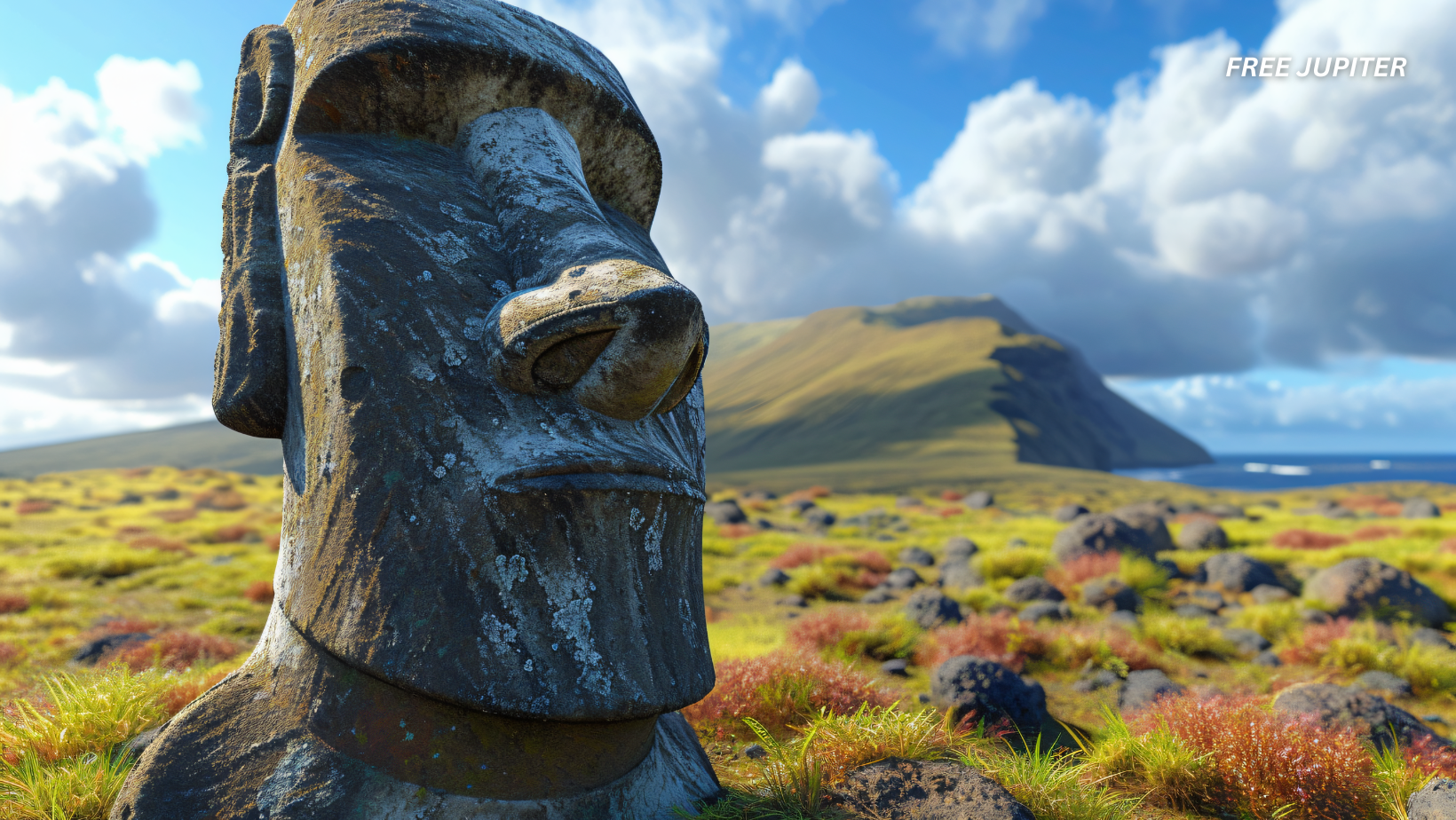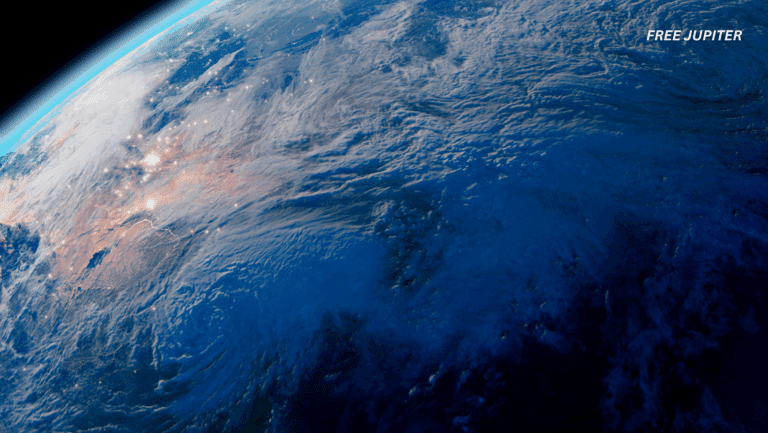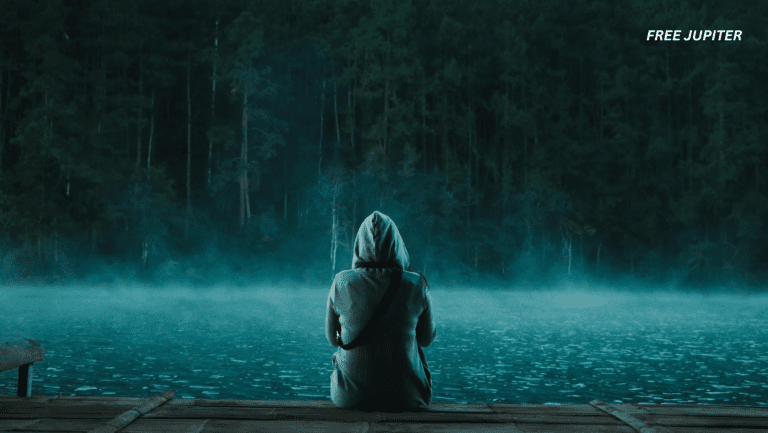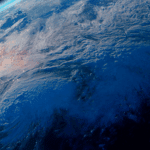Friendly Note: FreeJupiter.com shares general info for curious minds 🌟 Please fact-check all claims—and always check health matters with a professional 💙
Easter Island—known as Rapa Nui to its Indigenous people—has always held an air of mystery. For centuries, the island has been guarded by its silent stone sentinels, the moai. These towering figures have fascinated explorers, archaeologists, and travelers alike, each one carved with painstaking skill to honor an ancestor or leader.
Now, the island has surprised the world yet again. From the cracked earth of a once-water-filled crater lake, a new moai has emerged—one that archaeologists say should not have been there at all.
An Unexpected Discovery Beneath the Lake
The find happened in the Rano Raraku crater, the quarry where most of the island’s statues were originally carved. For centuries, a small lake occupied the base of the crater, fed by rain and surrounded by reeds. This was not a place anyone expected to find a moai.
But with a period of unusually dry weather, the lakebed began to recede. Beneath the cracked mud and tangled vegetation, a shape began to appear—a carved stone head and torso, partially buried, looking skyward.
Terry Hunt, an archaeologist from the University of Arizona, admitted even he was taken aback. “We thought we knew all the moai,” he told reporters. “But here’s a new one, sitting right in the lakebed where no statue has ever been found before.”
The statue is small compared to its massive siblings, but its placement is unusual enough to raise many questions. Why was it here? Was it abandoned before completion? Or was it deliberately placed in the lake for reasons lost to time?
Read more: Scientists Create Light From Complete Darkness in Groundbreaking Discovery
A Treasure for the Rapa Nui People
For the Rapa Nui community, the discovery is deeply significant. Salvador Atan Hito, vice president of Ma’u Henua—the Indigenous organization that manages Rapa Nui National Park—explained that even the island’s elders had no knowledge of a statue in the lake. “This is very important to us,” he said. “Even our grandparents didn’t know it was here.”
On Easter Island, each moai is more than just a monument. It is a spiritual and cultural bridge between the living and the dead. These statues were believed to embody the mana—the spiritual energy—of the individuals they represented.
The Moai: Silent Witnesses of History
The moai are instantly recognizable: large heads, elongated noses, strong brows, and heavy chins. In fact, most of the statues are not just heads—they have torsos, though many are buried up to their shoulders due to centuries of erosion and shifting soil.
The tallest completed moai stands over 30 feet high and weighs about 86 tons. The largest ever attempted, known as Te Tokanga or “The Giant,” lies unfinished in the quarry, stretching an incredible 63 feet and weighing up to 100 tons.
The newly found moai, by comparison, is modest in size—small enough that researchers think there may be more of its kind hidden in the lakebed.
How the Moai Were Moved Without Wheels or Beasts
One of the greatest mysteries of the moai is how they were moved. The Rapa Nui had neither large draft animals nor wheeled vehicles. Yet, they somehow transported these stone giants from the quarry to locations across the island—sometimes miles away.
Oral traditions and experiments suggest an ingenious method: “walking” the statues upright. Using ropes, teams on each side would rock the statue forward, pivoting it slightly with each step, much like moving a heavy refrigerator. This avoided dragging the moai, which could have damaged them, and allowed them to travel over uneven ground.
It was a feat of engineering, coordination, and sheer human determination.
The Quarry: Birthplace of the Moai
Rano Raraku crater is not just a quarry—it is the birthplace of the moai. The volcanic tuff here is relatively soft, making it easier to carve. Statues in various stages of completion still dot the slopes, as if the carvers put down their tools one day and never returned.
The newly found lakebed statue adds a twist to this story. Was it left unfinished because of a sudden event, like a drought, conflict, or shift in cultural practices? Or was it intentionally placed there as part of a ceremony we no longer understand?
Rethinking Easter Island’s Isolation
For decades, Easter Island was thought to have been one of the most isolated societies on Earth. Its people, historians believed, settled there once and remained cut off from the outside world for centuries.
But recent research is rewriting that narrative. A team from Uppsala University in Sweden has found evidence suggesting that the island’s population may have been refreshed by multiple waves of settlers from across Polynesia over hundreds of years.
These ocean navigators traveled thousands of miles in double-hulled canoes, using the stars, ocean swells, and bird movements as their guides. Far from being isolated, the Rapa Nui may have been part of a network of seafaring communities that exchanged ideas, technology, and cultural traditions.
Read more: Astronomers Tuned Into a Nearby Star’s “Music” and Made a Shocking Discovery
The Ahu: Shared Cultural Threads Across the Pacific
One of the cultural markers linking Polynesian islands is the ahu—large rectangular stone platforms used for ceremonies, rituals, and sometimes as burial sites. These sacred spaces are found from Tonga and Samoa in the west to Easter Island in the east.
For years, researchers assumed the design spread from west to east. But some archaeologists now believe Easter Island may have influenced other islands, with the tradition moving in both directions over time.
This challenges the long-held idea that the island was a cultural dead end. Instead, it may have been a hub—remote, yes, but still connected to the great web of Polynesian voyaging.
Modern Tools, Ancient Mysteries
The discovery of the lakebed moai was made possible by nature—dry weather exposed what had been hidden for centuries. But technology is now helping archaeologists look deeper without digging blindly.
Hunt and his team use drones and 3D imaging to document statues in detail, capturing everything from surface carvings to subtle wear patterns. Ground-penetrating radar may soon help locate other statues buried beneath the lakebed or hidden in the hills.
Such tools could reveal much more about how many moai remain undiscovered, and perhaps even how they were carved and transported.
Why the Moai Still Matter
To the outside world, the moai are archaeological treasures. To the Rapa Nui people, they are living symbols of their ancestors and their enduring cultural identity.
Every new discovery is a reminder that the island’s history is not frozen in time—it is still unfolding. The statues, whether standing on a windswept slope or emerging from a cracked lakebed, continue to connect the present-day community with the generations that came before.
Read more: The Discovery Of A 1,200-Year-Old Ship ‘Laden With Cargo’ Is Rewriting The History Books
A Mystery That Refuses to Fade
The lakebed moai stands as a quiet puzzle. Was it deliberately hidden? Accidentally forgotten? A ceremonial offering to the water? Or simply a work left unfinished in a time of change?
Archaeology thrives on such mysteries. Each answer often leads to new questions, and each statue tells a slightly different story. As Hunt remarked, “When there’s one moai in the lake, there’s probably more.”
And so, Easter Island keeps its secrets—revealing them only when it chooses, often in ways no one expects.










